Engineering: The route to problem-solving
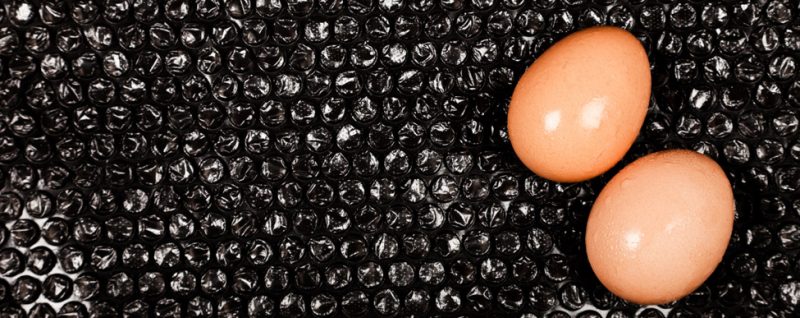
The delicate egg hatched some heavy discussion among the basketball team young scientists inspecting a pile of squishy packing materials. "So, bubble wrap?" asked Samuel Coulson, 14, of West Platte High School in Weston, Mo.
The team, working with only the materials at hired man, had to formulate a way of protecting a raw egg from a serial of increasingly higher drops. The challenge pit these students against quint past teams at the instant annual Broadcom MASTERS contest. It was held in Washington, D.C., from Sept. 28 through Oct. 3.
As the team pondered its options, some plastic wrap burst with a satisfying sound. "Stop pop it," said Maria Elena Grimmett, 13, from Oxbridge Academy of the Palm Beaches in West Palm Beach, Fla.
The 7th- to 9th-graders qualified as finalists in the competitor based on a scientific discipline fair cast from the previous academic year. Only that projection would count for only one-one-fourth of from each one contestant's score here at the finals. The majority of each grievance would reflect how well a student performed in a series of radical challenges — including the egg drop.
"Guys, I seriously think packing peanuts, referable the fact that they actually swoop against to each one other," suggested Track Carl Lewis, 13, who is home-schooled in Chapel Hill, N.C.
The team events would award creativity and cooperation as the students spent a long weekend collectively brainstorming solutions to various challenges. At gage: national bragging rights and a top acquisition award of $25,000. Additive awards would disco biscuit to participants World Health Organization demonstrated majuscule innovation and outstanding performance in applying skill, technology, applied science and mathematics (or STEM).
"We're just expiration to give bubble wrap as the satellite layer," declared Daniel Lu, 13, from Concord-Carlisle Location High pressure School in Accord, Mass. "Then we can fill up the rest up with packing material peanuts."
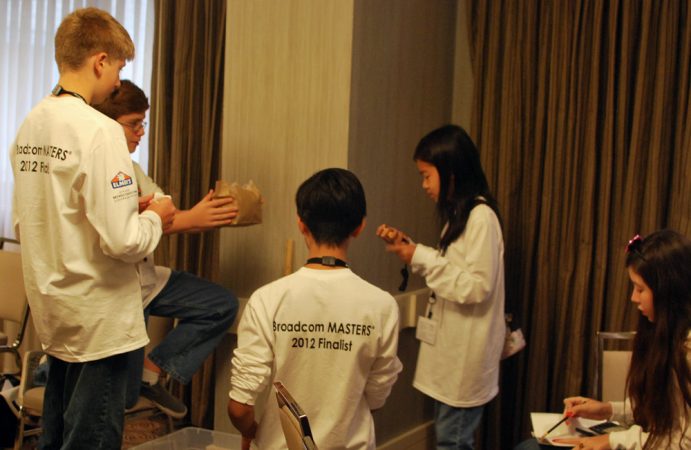
And in the end, that's what the White Team did. On Monday, Oct. 1, the four, along with Anna Lou, 12, from Oxford Academy in Cypress, Calif., bedded the at bottom of a John Brown report tiffin pocketbook with packing peanuts and bubble wrap. The layers cocooned a zippered elastic bag filled with more packing peanuts — and a widowed egg. The team then dropped the egg from waist-height. Would it survive the fall?
E is for engineering science
This year's Broadcom competition focused on engineering science. Engineering means using maths and science to design new things or to solve matter-of-fact problems — such as cushioning a dropped bollock.
As Samuel held out the White Team's egg and LET it drop, his teammates timed its fall. The students all remained overconfident the orchis would land intact. Later, the squad would use the time and the distance the bollock fell to calculate how fast information technology was traveling when IT hit the floor.
The competition gave the students a sentiency of the many different types of engineers. Software engineers, for instance, design computer programs. Structural engineers may design a bridge to handle heavy loads, to span especially drawn-out distances or to hold out harsh conditions. Chemical engineers create new foods or fuels. And political unit engineers design sewers, tunnels, buildings and other structures that we answer upon in familiar life.
"Thunk!" The White Squad's egg hit the bottom of a plastic BIN on the carpeted coldcock of the hotel where the competitor was winning place. The five expectantly peered inside: The egg had survived!
Among the many an problems that engineers tackle, protecting eggs is one that most consider jolly practically resolved. Egg cartons work well, and most people take care not to drop eggs anyway. Still, the egg put down provides a good challenge for young engineers — especially as the height increases.
For the second drop, the White Team had to release its egg from a height of about 6 feet (1.8 meters). Furrow climbed onto a chair, held out the egg and let go. Would the testis survive this time?
The Broadcom finals challenged the competitors to think about the egg drop as similar, or similar, to a car crash. Engineers design automobiles to protect the the great unwashe inner, right like a paper bag filled with packing peanuts and bubble wrap can protect an egg.
Unfortunately, the White Team up's 2d drop didn't end so well for the egg: "It broke into and then many a pieces!" Dog moaned. On the side by side try, the students added more bubble enwrap, which solved the problem.
To reward the crash analogy, the six teams started the ball drop take exception by watching two videos from the Insurance Institute for Highway Safety. This organization studies how to keep citizenry safe during car crashes. The videos showed crashes created under lab conditions. The vehicles restrained No real drivers or passengers.
In the first video, a car ran into the back of a motortruck, but the barge in wasn't too bad. In the second video, the same type of car ran into the same character of truck. This time, the railcar was nearly destroyed as a share of the truck perforated the car's windshield — right where the driver's head would have been.
Just like that s crash, not every ballock drop turned out well. One of these days, the White Team figured come out of the closet how to protect an egg enough to appropriate it to make it a drop from intimately 8 feet (2.4 meters) above the ground. All the other teams protected their eggs too — although not e'er on the first try.
To help the Broadcom MASTERS finalists understand how apparently similar crashes could deform out so otherwise, the Insurance Institute provided detailed measurements from the collisions it had conducted. The finalists then used these data to understand some critical differences. For instance, in the second crash, the car was traveling 10 miles (16 kilometers) an minute faster. Using this information, the students calculated how much harder the car stricken the truck in the second base clangour. So, each team applied the equal principles to calculate how falling their eggs from other high would affect their speed.
-
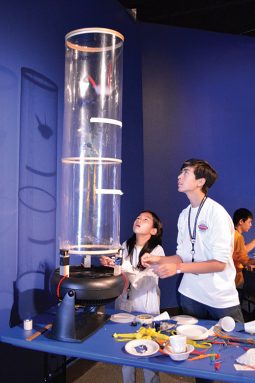
Julio Vargas, president of the Washington, D.C., chapter of Engineers Without Borders, speaks to members of the Bolshevik Team. He and his colleagues walked Broadcom MASTERS finalists through and through some of the math obligatory in getting water from an raised holding tank to homes. Jessica Kirsh (IML Picture taking) / SSP - Students take part in a wind burrow challenge at the Maryland Science Center in Baltimore. Engineers on site helped walk Broadcom MASTERS finalists through and through several activities. Credit: Patrick Thornton/SSP
Engineering science safer conditions
Probing the dynamics of crashes (or drops) and how to point of accumulation damage is a model of engineering. On the Sunday of the Broadcom finals weekend, locomotive engineer Julio Getulio Dornelles Vargas offered others.
Vargas is president of the Booker T. Washington, D.C., chapter of Engineers Without Borders. His group helps people in developing countries. In the last fewer years, his chapter has worked with people in Santa Clara, a rural town in the Isthmus country of El Salvador. Conjointly, they are helping to bring clean boozing water to homes there.
The obtuse goal necessary some complicated engineering. The engineers first had to decide how to clean the water they retrieved from a well. Then they had to pump IT uphill into a water tank. The engineers also had to design a system to circulate the stored piss to about 400 separate households. Vargas and his coworkers spoke to the Broadcom finalists during a athletic field trip to the Maryland Science Center in Baltimore. The engineers reviewed some of the math they victimised in figuring out how to distribute the weewe from the overhead railway holding tank to every last of those homes.
Water leaving the property tower runs downhill. But if the tugboat isn't high enough, the piddle won't leave it with enough energy to get through each home. So the engineers used a gauge to cadence the irrigate pressure at different heights. During the Broadcom MASTERS contender, student researchers simulated the problem using deuce buckets, some tube and a step ladder.
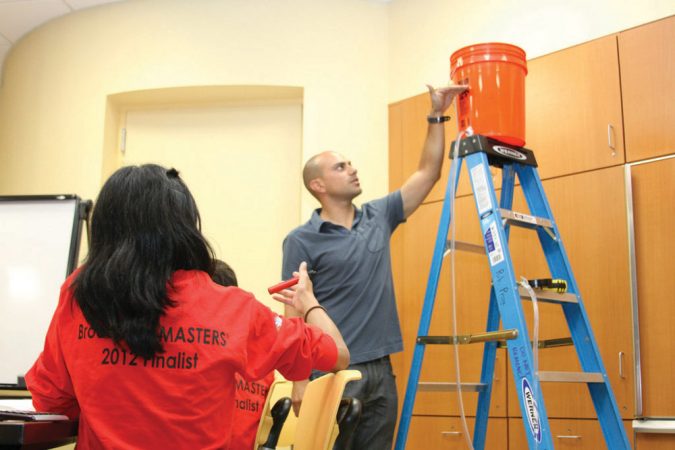
"I had no idea that giving water to a metropolis involved so practically math," said Varun Iyer, 14, a Purple Team member from Springfield High School day in Illinois. Through this physical exertion, helium noted, "I learned how you can use math in the real world."
STEM's least understood element
Varun is already well on his way to becoming an engineer — you could articulate it is a family line tradition. His parents are software engineers, an uncle is a mechanical engineer and his granddaddy was a political entity orchestrate. Young Varun is interested in medical specialty engineering. One day, he mused, he might design robots that help surgeons make fine cuts on subtle organs. He suspects even his olive-sized sister mightiness join the community. "She's bad good at math," helium said, and "likes science a lot."
The Broadcom MASTERS focused happening engineering in part because many Whitney Young people don't know what IT is. Vargas explained to the finalists how he became fascinated in engineering science when he happened to take a drafting assort in senior high.
Drafting involves the exact draft of very detailed plans that others fire use to progress things, such as machines Beaver State buildings. Vargas began drafting victimisation pencils and paper. Today, near engineers use computers. His early start in drafting elysian him to study engineering in college.
"Technology is the power to decipher a problem or deman and rise up with a solution," Vargas explained. For example, Vargas works at IBM, where he makes sure that the computers people use to sign in at airports are safe. Those computers whitethorn not look dangerous, but that's because of people like Vargas. A calculator "could devolve on you, information technology could shock you, it could have a lancinate edge. It could fail and start a fire," he said. So Vargas anticipates every possible way a computer might hurt you. He then designs ways to concentrate the chance that any of those might happen.
Elizabeth Hubler, a student at George Washington University in Washington, D.C., also tended to the Lord's Day event to divvy up the joys of engineering science with the finalists. Hubler is in her third year of college and majoring in mechanical engineering. Mechanical engineers design, build and run all types of machines. Hubler got interested in engineering in senior high school patc competitive with other young people to build robots that met certain challenges. "I was like-minded, OH, this exists? That would be really cool to study in college!" Hubler said. Now she and a prof study how melody flows when you talk — and how that changes when there's a problem with your vocal cords.
Engineer Shane Lansing lives in CA, simply flew across the body politic to tell the young researchers about careers in engineering. Lansing kit and caboodle at Broadcom, the company that sponsors the Masters competition. There, he directs a team that designs the data processor chips misused in all types of communications devices, including the Wii computer game console and iPhone.
"I loved being the pull the leg of that was always solving the math problems that no of the other kids could solve," Lansing said. Work still offers that kind of competitive excitement, he aforesaid. In point of fact, most of his coworkers have held onto their childhood ebullience for problem resolution, Lansing explained. Even as grownups, the Broadcom employees distillery fiddle with things and play telecasting games.
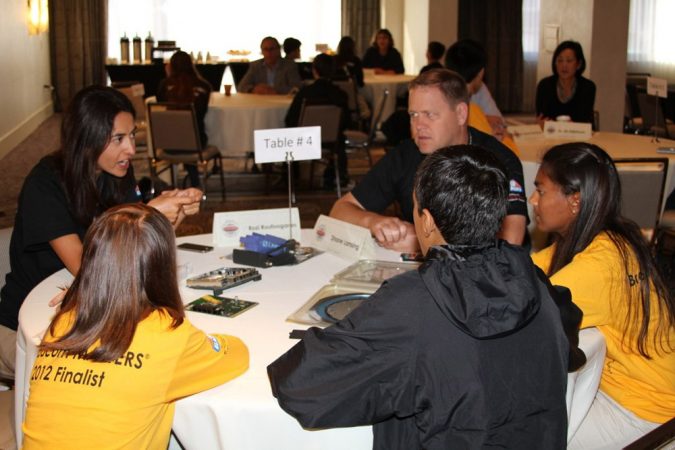
If you're curious in engineering, play can be a great place to start, Vargas same. "Buy a Lego and just start experimenting," atomic number 2 suggested. "That's what I did." Vargas would start by following the instructions. "Then I'd hold it all divided and material body it the way I wanted to build information technology." Finally, he would fles something bettor — just as an engineer would.
Power Dustup
biomedical engineer An expert who uses science and math to find solutions to problems in biology and medicine; for exemplar, they might make up medical devices much as artificial knees.
civil engineer An engineer who creates buildings, tunnels, water systems and opposite large projects that improve everyday life.
estimator chip off (also integrated circuit) The computer component that processes and stores information.
developing country A poorer country with comparatively little industry and a lower standard of life than progressive countries, such as the U.S.A and Canada.
drafting The creation of detailed plans operating theatre drawings that others can use to build something.
applied science The apply of math and science to solve practical problems.
windup engineer An engineer who designs, builds surgery operates machines.
modem An electronic device that connects your computer to the Internet.
pressure gage A twist that measures pressure.
software engineer An engineer who designs and works with computer programs.
vocal cords Two folds in the human pharynx that vibrate to produce your phonation.

0 Response to "Engineering: The route to problem-solving"
Post a Comment